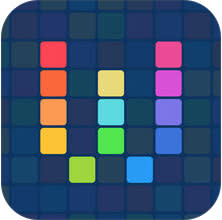Automate your iOS life with Workflow

In the beginning, there was DeskConnect. It was an amazing set of apps that gave the pre-iOS 8/Yosemite world the ability to do AirDrop-style transfers between Macs (and PCs) and iOS devices. It's still around for those who haven't yet upgraded to the new operating systems. But it appears that the developers at DeskConnect saw the Sherlock writing on the wall, so they decided to create an app that is -- in one word -- amazing. Workflow (launch price of US$2.99, regularly $3.99) is an app for creating automated workflows on your iOS devices that can do just about anything you can think of.
Upon launching for the first time, Workflow takes you through a short tutorial to demonstrate the process of creating a very simple workflow -- having the iPhone or iPad camera take three pictures, turn them into a GIF movie, and then share the GIF. Doing this is easy; you create a blank workflow, then begin dragging actions from a huge list (153 built into the app at launch) over to that blank sheet. All of this is done with simple, colorful drag and drop interface.
Actions are categorized by type: calendar, contacts, documents, maps, music, photos & video, scripting, sharing, text and web. For example, under calendar you'll find actions like "Get end date" and "Current date"; under maps, a way to get a Google Street View image of a location or request an Uber.
Web actions include adding something to your Safari reading list, or getting contents of web pages. Music can control music play, or return the title of the currently playing song to Workflow.
Probably the most powerful actions, however, are those for scripting. Have you ever wanted Apple's Automator on your iOS device? The scripting actions in Workflow are the next best thing, and the ability to control the flow through choose from menu/if/repeat/wait/exit commands actions brings conditionals to your workflows.
There's device control in those scripting actions as well; a workflow can return the name of the current network, launch an app, set the screen brightness, turn on or off the "flashlight", or set the volume of the device. Notifications can be scripted -- showing alerts, notifications, playing sounds or vibrating your device. And it's not just limited to your iOS device, either -- you can run a shell script on a desktop machine over SSH.
Workflows can be standalone "apps" that you can add to your home screen, or you can create Action Extension workflows that run in the share sheets of other apps. If you've created a workflow that is useful and you're proud of, you can share it with others through the Workflow gallery.
There's probably nobody on the planet who can explain iOS scripting better than the creator of MacStories.net, Federico Viticci. Viticci had pre-release access to Workflow and as such, was able to create a number of workflows that he's shared -- including "Print to PDF" (an Action Extension), "Find Lyrics", and more. I used the Print to PDF extension to save his Workflow Review to PDF, because I'll want to keep it around for reference in the future.
For myself, I wanted to create a workflow that would take recipes I've found on the web, convert them to PDF, and then save them to a Dropbox folder. Since there was already a Print to PDF Action Extension (thank, Federico!), I grabbed that one to start off with, changing the name to "Send Recipe to Dropbox" and using the built-in library of glyphs to make a "utensils" icon.
The only thing I really needed to do was get rid of the Quick Look action and replace it with a Save to Dropbox action. That action asked for access to my Dropbox account, and there was a choice to either have it ask which Dropbox folder to save the recipe to or set a predefined path. I chose the latter, saved and ran the extension from Safari while looking at a recipe on a food website, and seconds later that recipe was sitting in Dropbox.
That Save to Dropbox action is one of many that link with existing apps or services, and it's expected that many developers will open their apps to Workflow. Personally, I'm hoping for a "Grab Screenshot" action, since I already have a workflow idea that could use it.
Another quick Workflow I developed expanded on "Print to PDF" by creating a PDF, then asking through a menu whether I want to store it to Dropbox or a folder in iCloud Drive. I could just as easily have it save to both services with a few easy edits.
Since I've only had a handful of hours to work with Workflow, I can't get into the details that Federico Viticci did. I highly recommend that anyone with interest in iOS automation and Workflow in particular take a look at his post over at MacStories.net.
In those few hours that I've been able to test Workflow, it's already earned a space on my Home Screen as a standalone app rather than being put into a folder. Being able to create your own "apps" and extensions is an amazingly powerful tool to add to any operating system, and DeskConnect should be commended for creating a 1.0 version that works so well. Workflow deserves a place on your iPhone or iPad; it's a universal app that requires iOS 8.0 or later, and is optimized for iPhone 5, 6 and 6 Plus.

